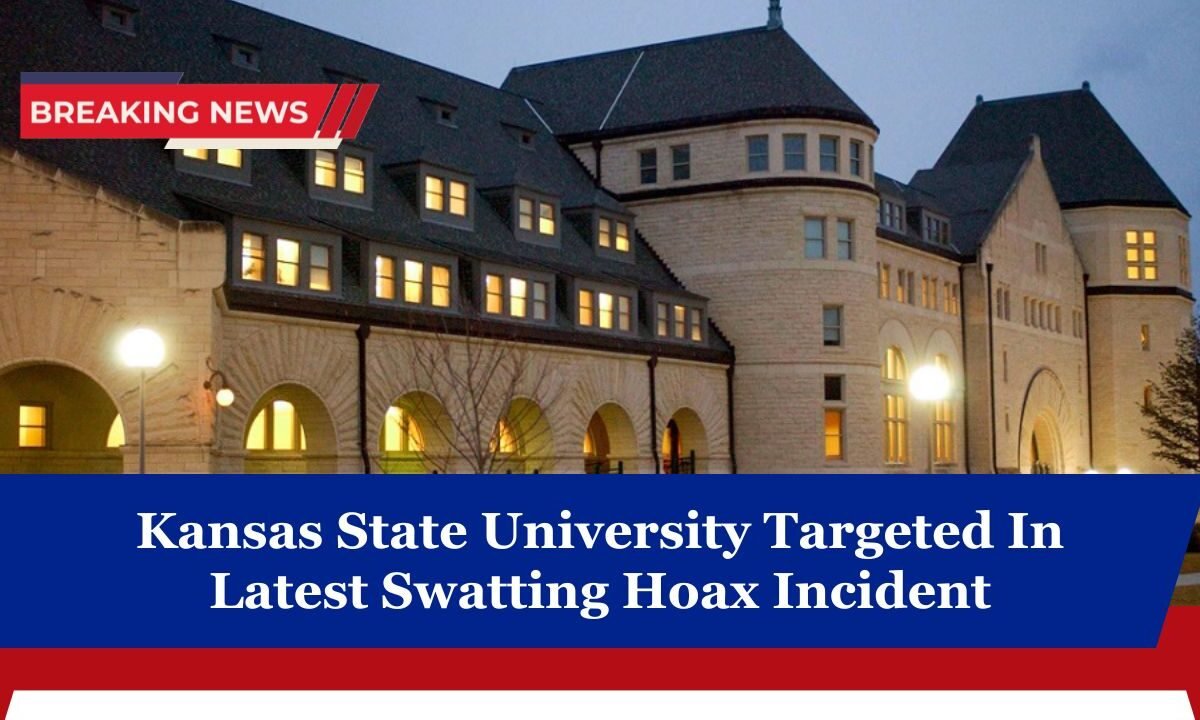Kansas State University became the latest victim of a swatting hoax, a dangerous prank that falsely reported an active shooter threat.
The call triggered an immediate police response and heightened fear among students before authorities confirmed it was a false alarm.
While the incident ended without harm, it highlighted the increasing frequency of swatting attacks on college campuses across the country.
What Happened at Kansas State
On the afternoon of August 25, 2025, a call was made to emergency dispatch claiming an active shooter was inside Hale Library on the Kansas State campus in Manhattan. Law enforcement officers immediately responded, sweeping the building and surrounding area.
Within minutes, it was confirmed to be a hoax, and the “all clear” was issued. Classes and activities soon resumed, but the incident left students shaken.
Swatting Hoax Details
| Event Detail | Description |
|---|---|
| Location | Hale Library, Kansas State University, Manhattan |
| Type of Incident | Swatting hoax – false active shooter report |
| Time of Call | ~4:30 PM, August 25, 2025 |
| Emergency Response | Immediate police and campus security presence |
| Outcome | No threat found, campus resumed operations |
| Duration | Approximately 8 minutes until “all clear” |
Why Swatting Is a Serious Problem
Swatting is not a harmless prank. By reporting a fake threat, perpetrators create panic, waste valuable emergency resources, and put lives at risk.
Police are forced to treat these calls as real, arriving armed and ready to neutralize a dangerous situation. In some cases, swatting has led to injuries and even fatalities.
The Kansas State hoax underscores the dangers of swatting on university campuses, where thousands of students and staff could be caught in the middle of a chaotic emergency response.
Growing Trend Across Colleges
Kansas State is not alone—swatting has become a nationwide trend targeting universities. In recent months, multiple campuses have received similar false threats, forcing mass evacuations, lockdowns, and heightened anxiety.
The start of the school year often sees an increase in these incidents, suggesting perpetrators deliberately aim to cause maximum disruption.
Student Concerns and Community Reactions
For students, the experience was unsettling. Many expressed frustration and fear that repeated false alarms could lead to complacency, with people responding less seriously in the future.
Others voiced concerns about the psychological impact, as hearing “active shooter” alerts immediately triggers panic in a society already grappling with real school shootings.
Parents also raised questions about campus safety protocols, asking whether universities are fully prepared to distinguish hoaxes from real threats.
Law Enforcement Response
Authorities emphasized that every call must be treated as genuine until proven otherwise. Officers are trained to act swiftly because ignoring a report could mean missing a real emergency.
Officials also condemned the act of swatting as criminal behavior that drains resources and endangers communities.
This latest incident prompted renewed discussions about the need for harsher penalties for those caught making swatting calls, as well as improved technology to trace and block spoofed calls used in these hoaxes.
The Bigger Picture
Swatting hoaxes are not just about wasted time and resources—they carry real risks:
- Public Safety Threat: An armed police response increases the chance of accidental harm.
- Mental Health Impact: Students and faculty experience stress, trauma, and fear.
- Campus Disruption: Classes, exams, and daily routines are interrupted.
- Erosion of Trust: Repeated false alarms could weaken responses to genuine threats.
The Kansas State University swatting hoax highlights the growing dangers of false emergency calls on campuses.
While the threat was quickly determined to be a hoax, the incident demonstrated how easily panic can spread. Swatting wastes resources, threatens public safety, and shakes community confidence.
Moving forward, stronger laws, better technology, and proactive awareness campaigns are essential to protect students and ensure that when alarms sound, they are taken seriously.




